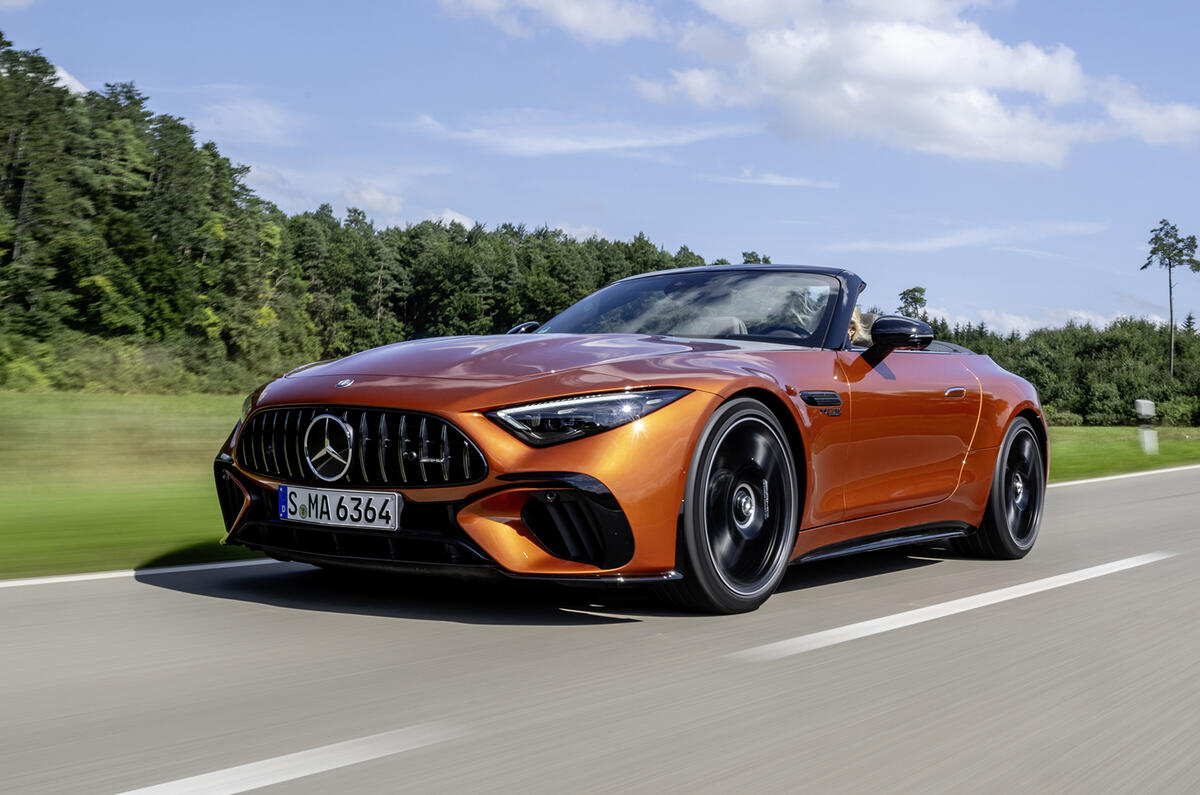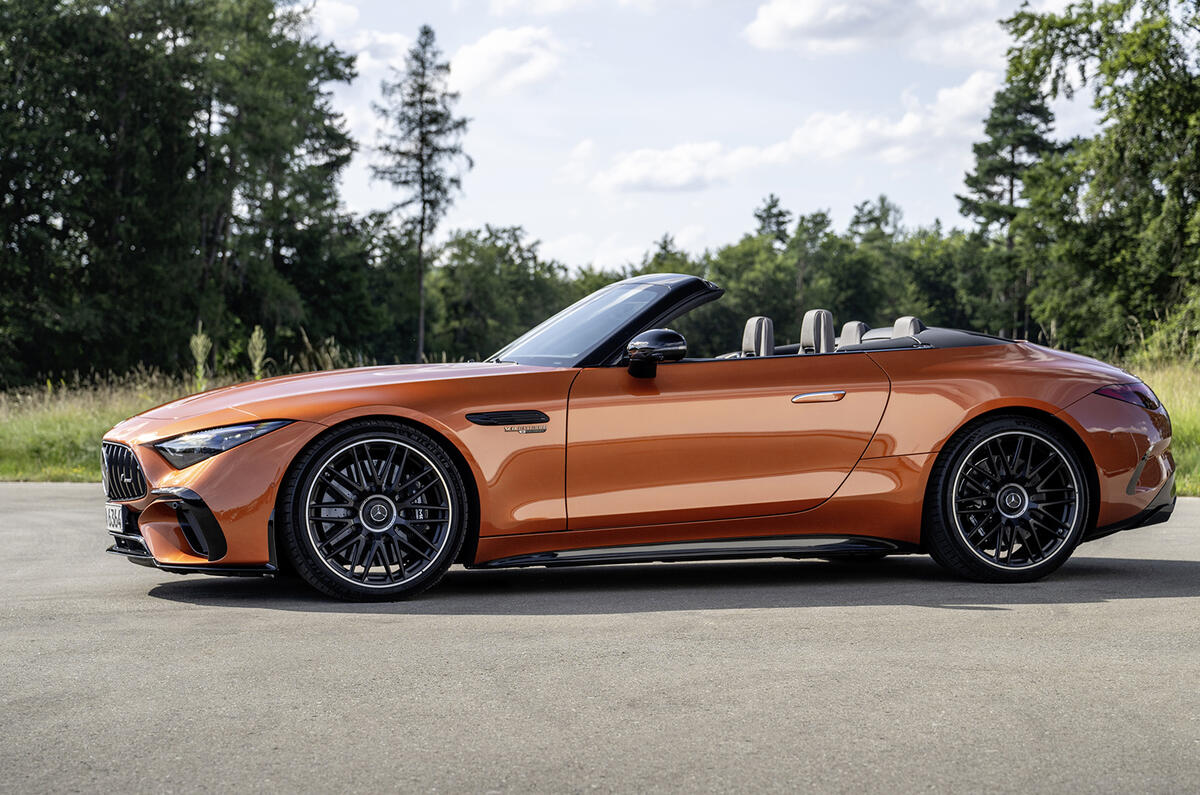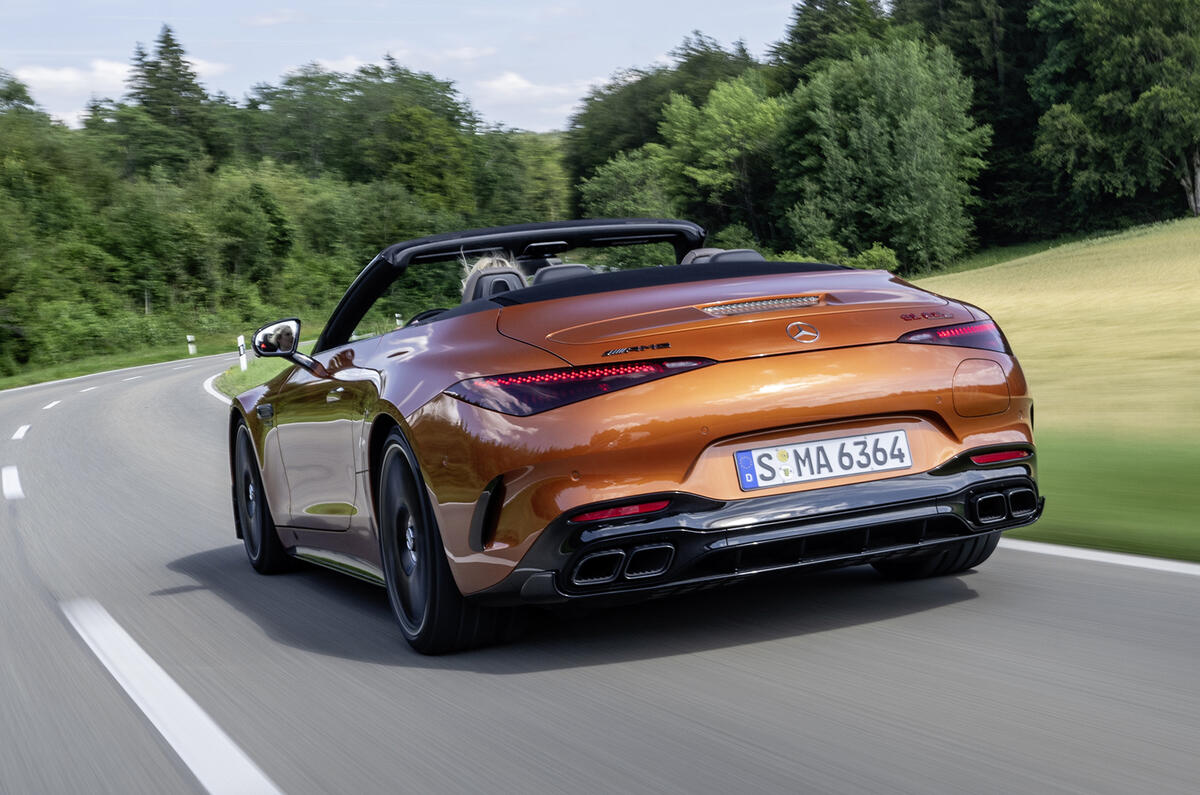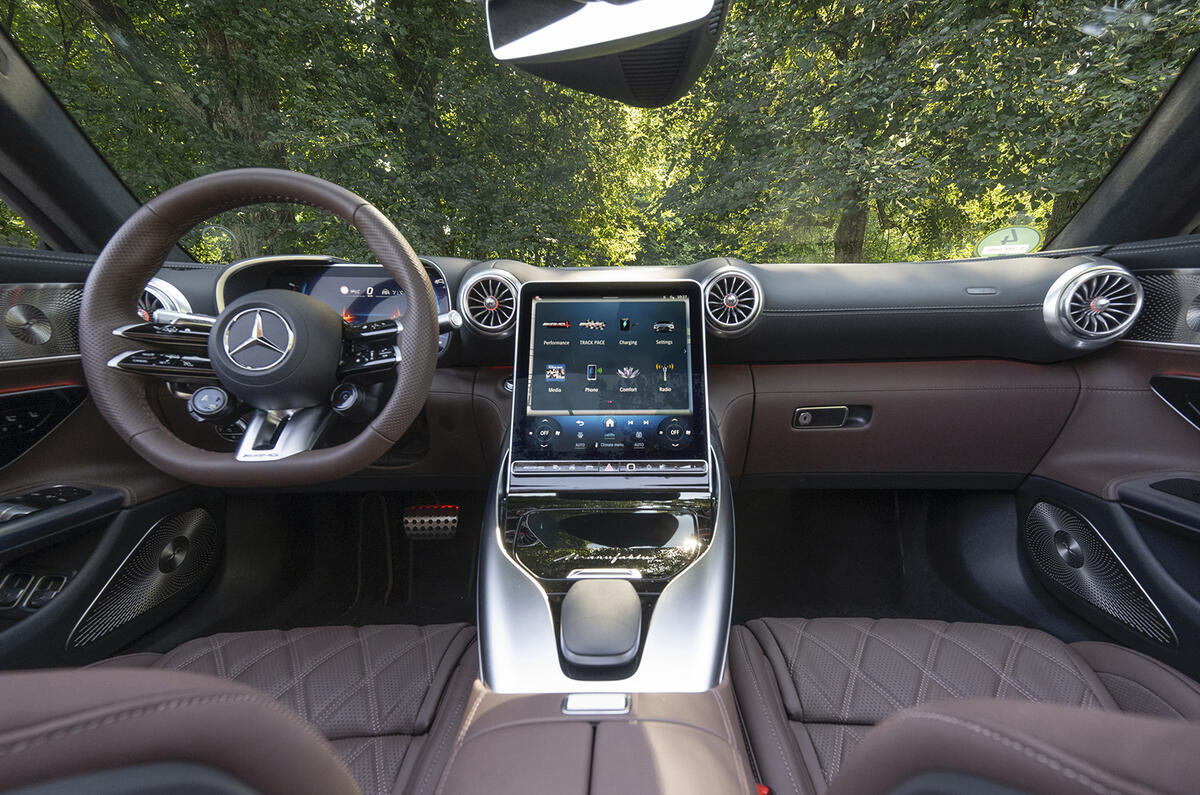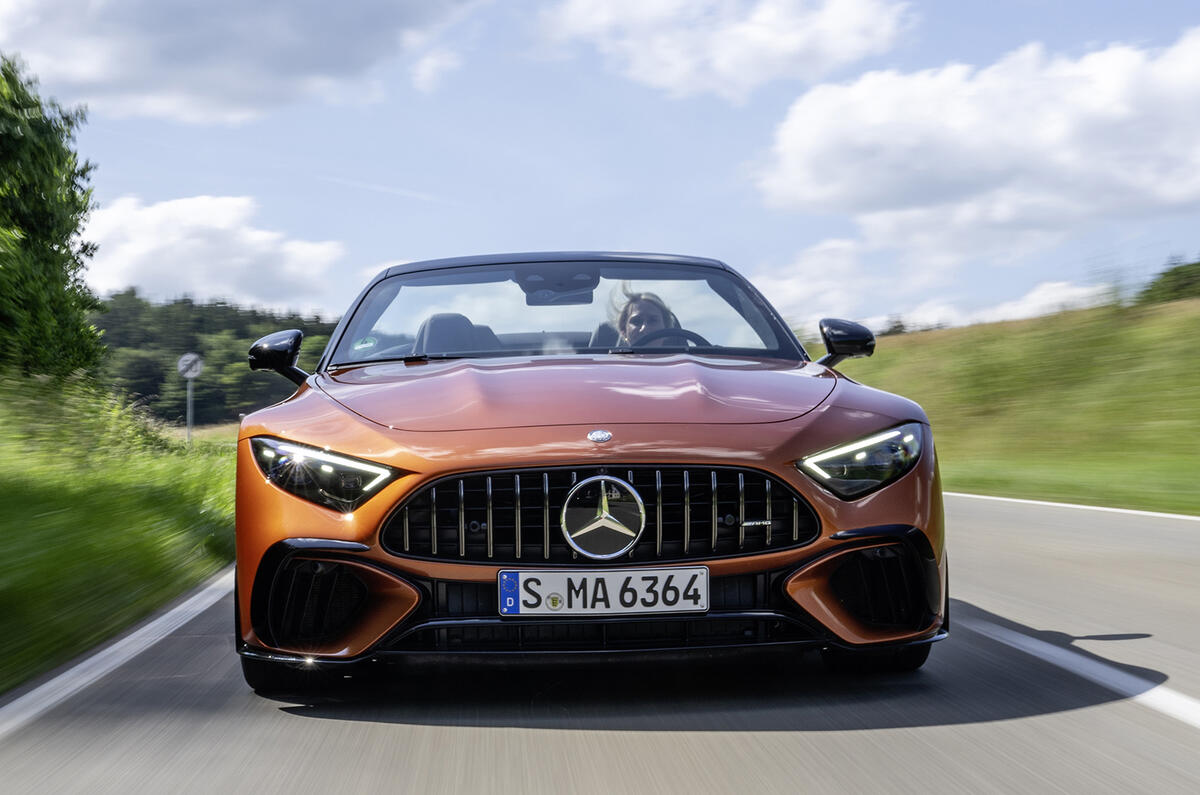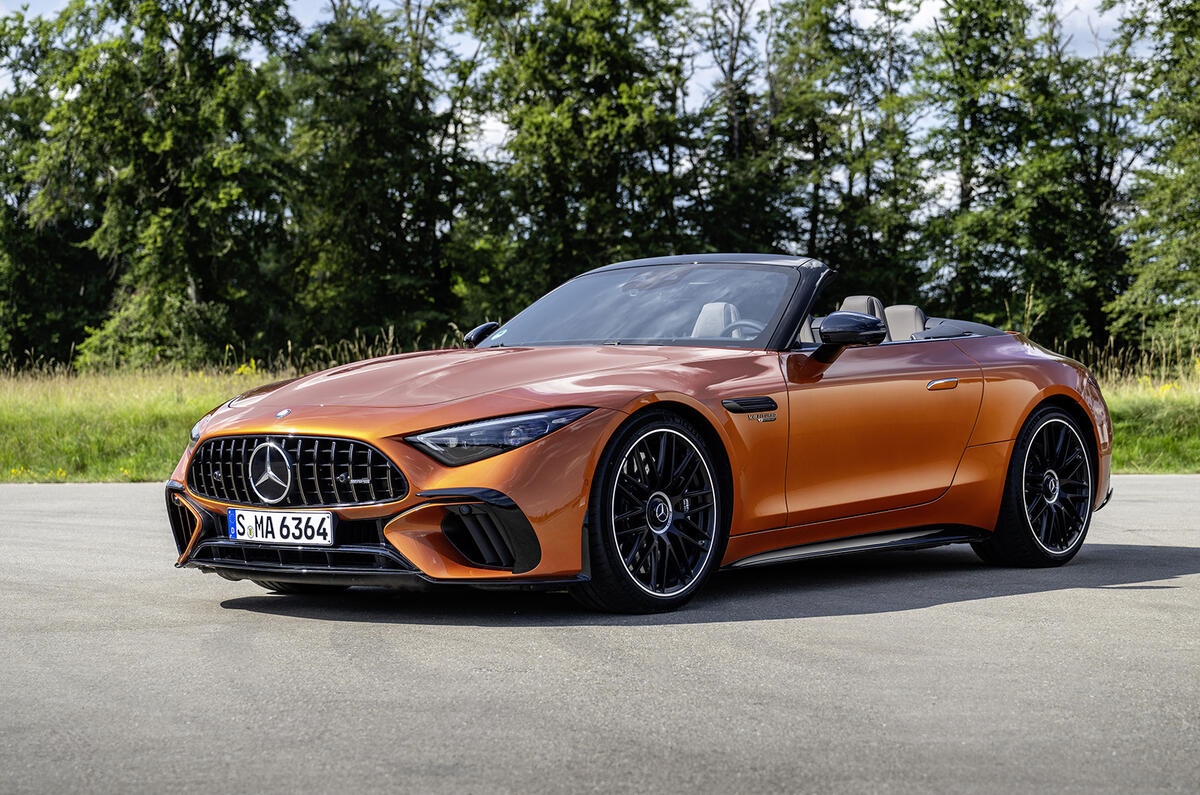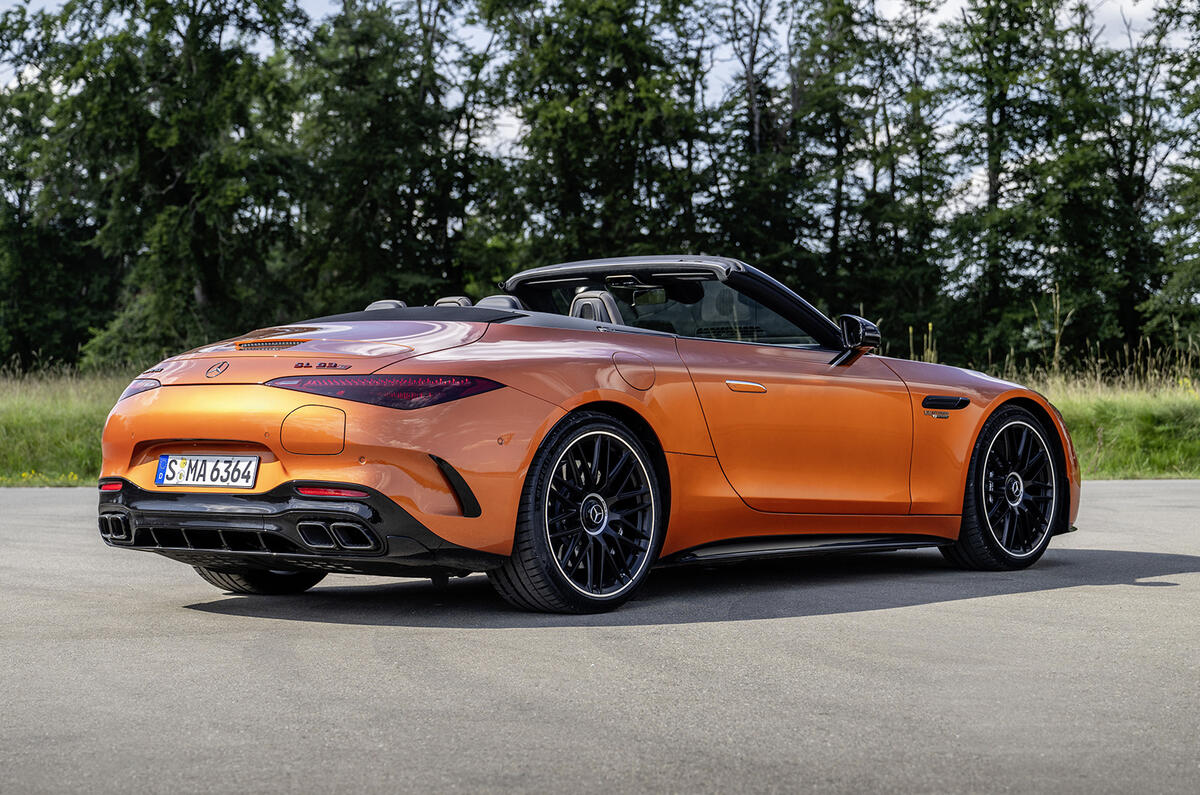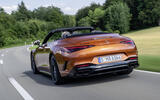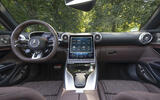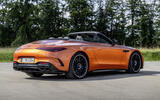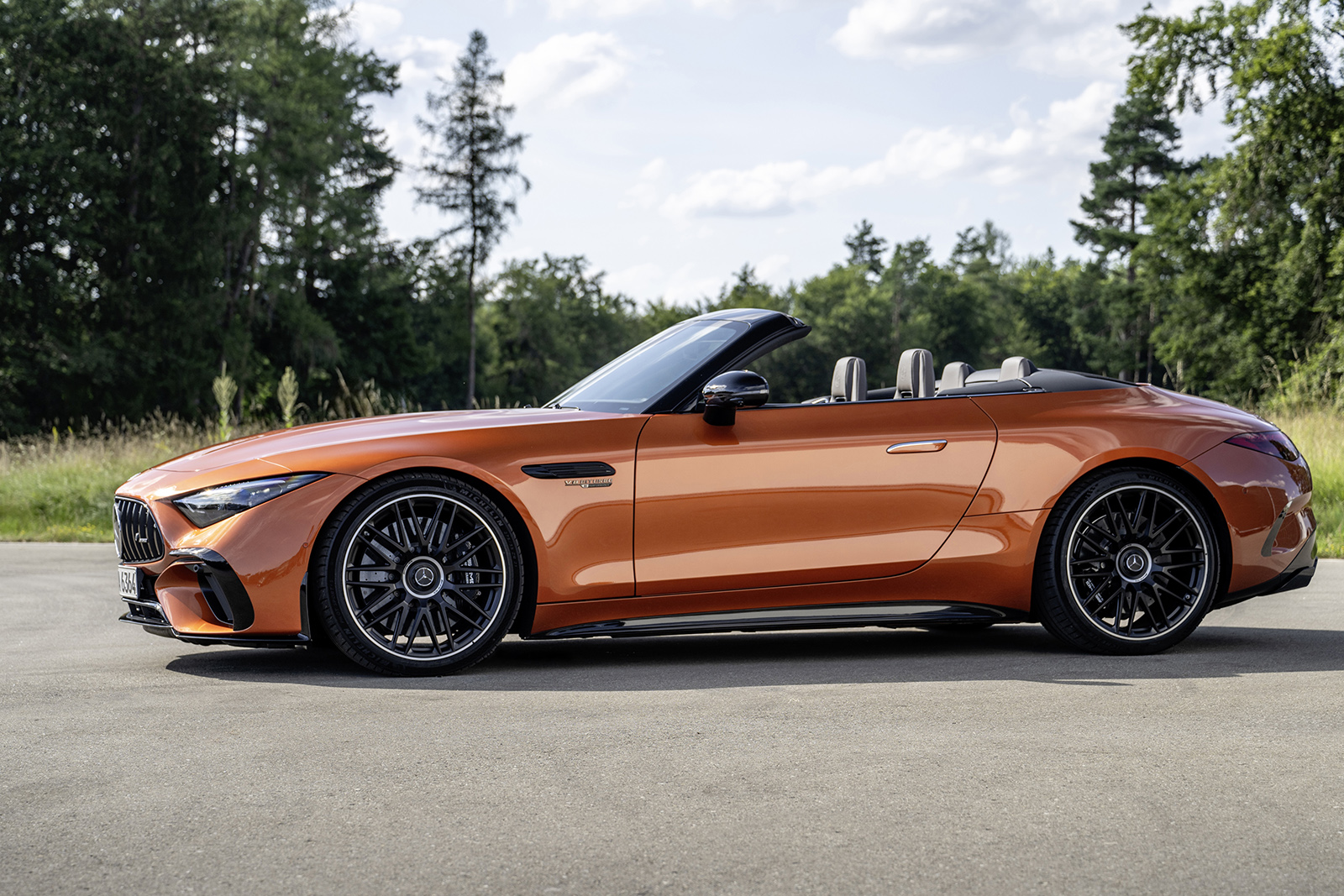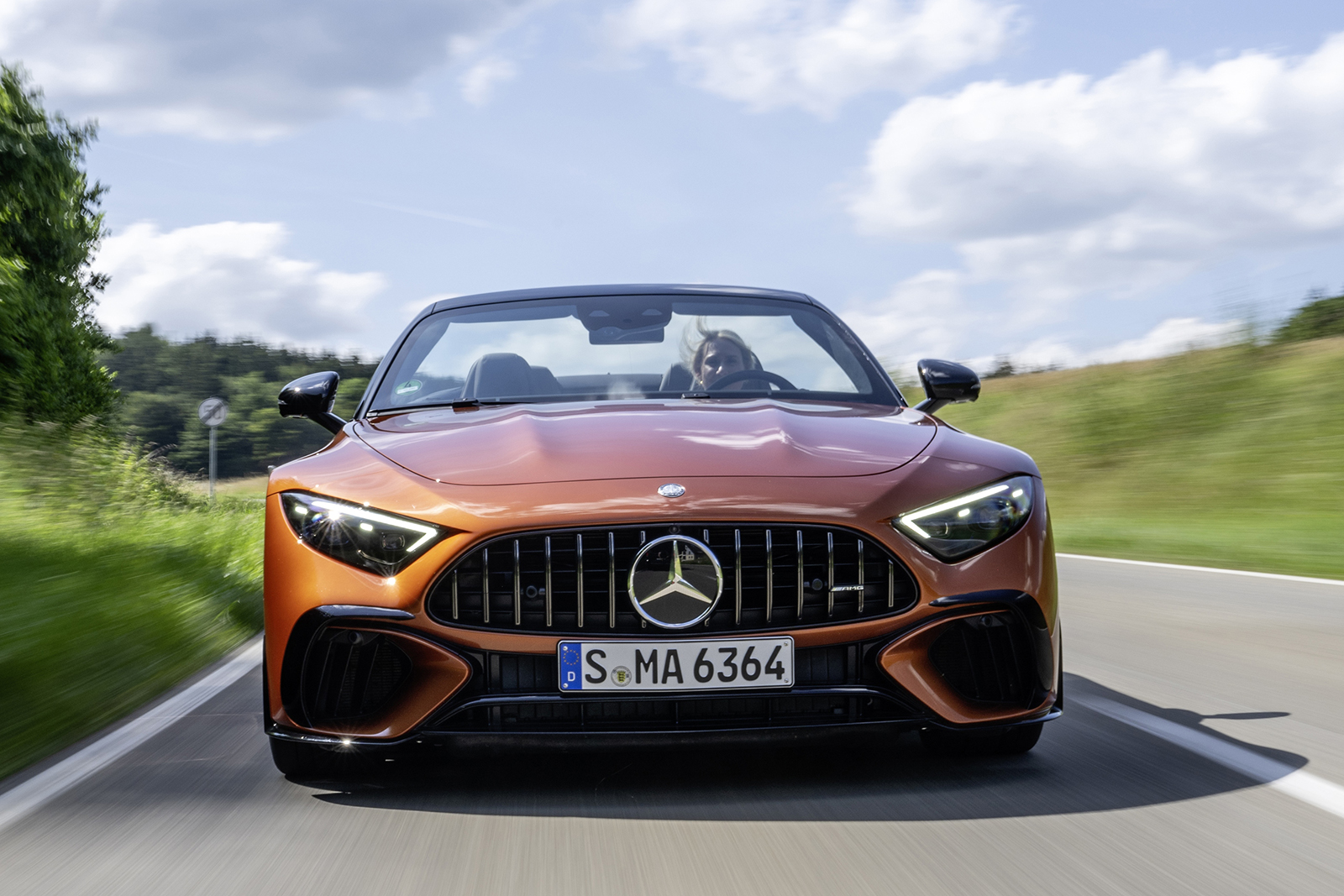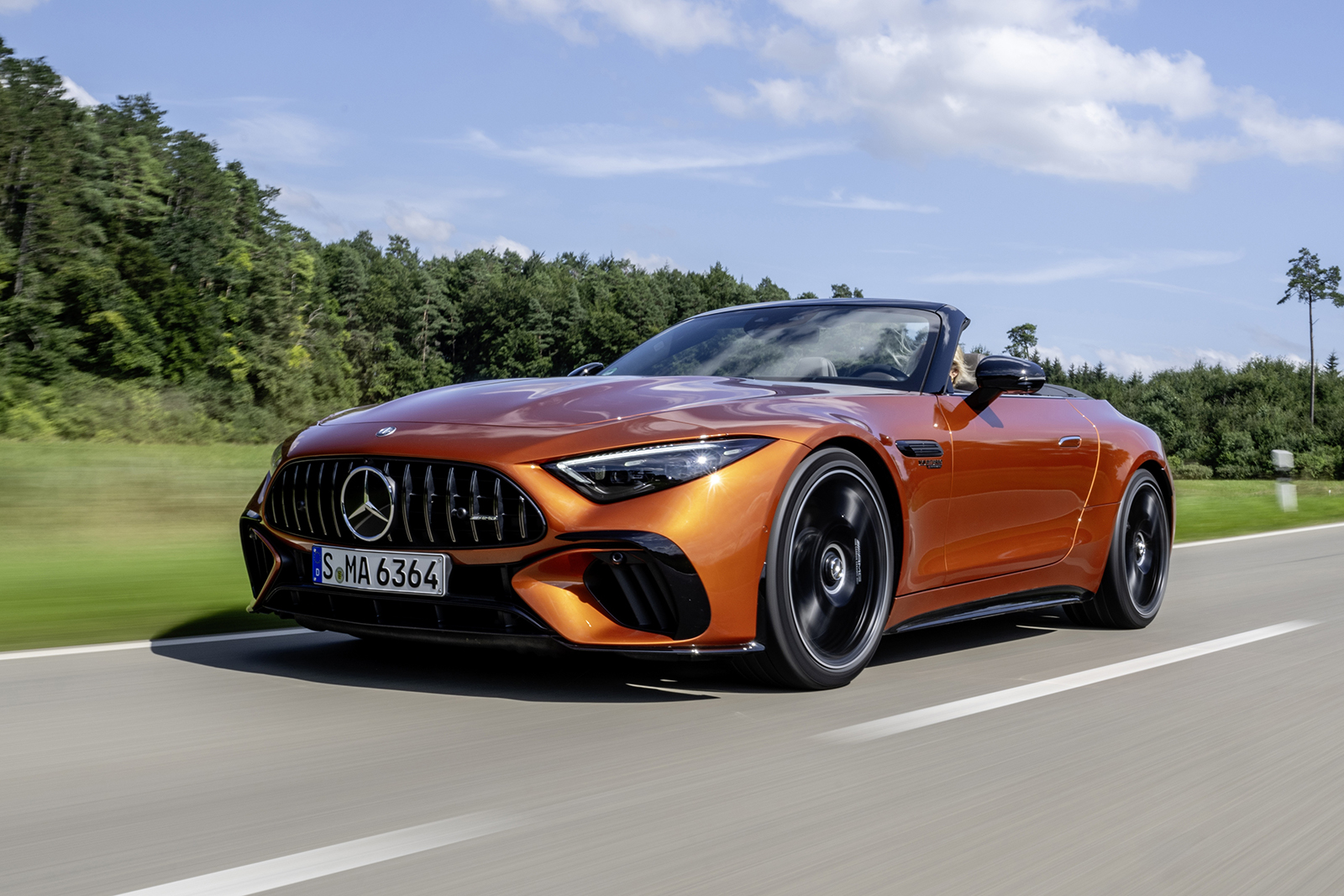Mercedes' decision to twin the seventh-generation SL with its second-generation Mercedes-AMG GT has opened the door to a whole new level of performance for the luxury roadster. And charging through that gap is the plug-in hybrid Mercedes-AMG SL 63 S E Performance.
The SL is already available with a turbocharged 2.0-litre four-cylinder engine with 416bhp (called the Mercedes-AMG SL 43), as well as with a twin-turbocharged 4.0-litre V8 powerplant developing either 469bhp (in the Mercedes-AMG SL 55 4Matic+) or 577bhp (in the SL 63 4Matic+). But even by the standards of those sibling models, this version is a big step up.
The S E Performance's twin-turbocharged 4.0-litre V8 and electric motor combo, worth a combined 805bhp, makes it the most powerful SL since the 'R230'-generation SL65 Black Series of 2008. Its hybrid system is also used by its fixed-roof sibling, the Mercedes-AMG GT 63 S E Performance.
Performance PHEVs capable of fewer than 10 miles of EV range are few and far between. But the SL 63 S E Performance does go toe-to-toe with the likes of the PHEV Bentley Continental GT as well as the hybrid Porsche 911.




